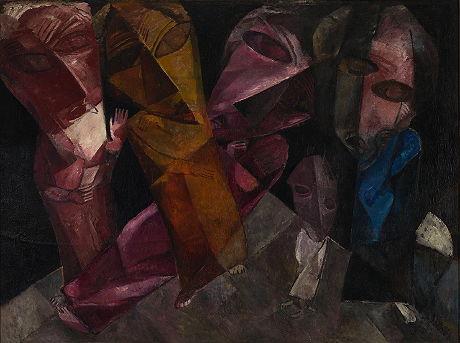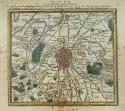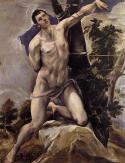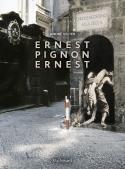Art Of The Day Weekly
#337 - from 13 March 2014 to 19 March 2014

Lasar Segall (1891-1957), Eternal Wanderers, 1919. Oil on canvas, 138x184 cm. Lasar Segall Museum, Saõ Paulo, IBRAM/Ministry of Culture. Photo: Jorge Bastos (exhibition at the Neue Galerie, New York).
IN THE AIR
77 years ago, degenerate art
NEW YORK – It has been mentioned continuously since the Gurlitt trove was recently discovered, revealing hundreds of works by artists censored by the Nazis; and naturally again today, now that George Clooney has produced a movie, Monuments Men, taken from the book by Robert M. Edsel. The moment was therefore ripe to talk about the infamous exhibit on ‘degenerate’ art (Entartete Kunst), organised in Munich in July 1937, which defined the artistic credo of Nazism and confirmed the persecution of Jewish artists and gallery owners. The atmosphere of this roving retrospective that was exhibited in various towns in Germany and Austria until 1939, is shown with images of Hitler and Goebbels in leather raincoats, looking at the incriminated works. Among those that were not destroyed nor lost, there is a significant selection, something of a litany of the great names of art of the 20th century: Beckmann, Kirchner, Klee, Kokoschka next to lesser known artists such as Mataré, Rohlf and Heckel. The curators tried to go back to the roots of this racist vision of art, and in various circumstances quote Alfred Rosenberg, Nietzsche and further back Max Nordau, the son of a rabbi on Budapest, who drew up at the end of the XIXth century the first typology of a ‘healthy’ form of art and that of a ‘degenerate’ form.
• Degenerate Art. The Attack on Modern Art in Nazi Germany 1937 at the Neue Galerie, from 13 March to 30 June 2014.
EXHIBITIONS
El Greco would be 400 years old
TOLEDO – He is one of the fathers of Spanish art and he inspired writers like Barrès as well as artists like Cézanne, Picasso or Giacometti. Yet, like his name shows, El Greco had no Spanish roots. He was born in Crete and was trained in what was then a distant metropolis, Venice. It was only in 1576, at the age of 36, that he began the Spanish career that gave him the greatest honours and the protection of Felipe II. To celebrate the fourth centennial of his birth, the city of Toledo, his adoptive city, has cooked up a most ambitious programme, with various exhibitions. The first one groups together some one hundred works from Spain and around the world, with for example, the Dormition of the Virgin from Syros, the Modena Triptych, or the portrait of Palladio kept in Copenhagen. Other exhibits, over the coming year, will be dedicated to his influence, his library, the productions from his workshop or his posterity in contemporary art of the 21st century.
• El Griego de Toledo at the Museo de Santa Cruz, from 14 March to 14 June 2014.

Nicolas Lancret (1690-1743), Fête Galante with Camargo dancing with a partner, circa 1727-1728, oil on canvas, 76.2 x 106.7 cm. National Gallery of Art, Washington, Andrew W. Mellon Collection © Courtesy National Gallery of Art, Washington.
Fêtes galantes, the spirit of the 18th century
PARIS - The art of living, French style? The images of the 18th century that come to mind show a period of games, fun and pleasures. Watteau (1684-1721) has become the symbol of this type of fêtes galantes, where the refinement of clothes, gardens and decors celebrates endelessly the number one passion, love. He was followed by less notorious imitaters, such as Nicolas Lancret (1690-1743) or Jean-Baptiste Pater (1695-1725) who all, quite curiously, lived short lives. Up to the one who closed the cycle, Fragonard (1732-1806). They are all gathered in this retrospective that shows some sixty paintings on loan from famous collections. Joy of life, carefree spirits, elegance: these works are the more touching because they seem to totally ignore the revolutionary hurricane that is coming near.
• De Watteau à Fragonard, les fêtes galantes at the musée Jacquemart-André, from 14 March to 21 July 2014.
A Swiss treasure
PARIS – while it closes for restoration, the Swiss abbey of Saint Maurice d’Agaune, that will celebrate its 1500th anniversary in September, is lending a part of its treasures: reliquaries, manuscripts, materials and liturgical silverwork.
• At the Louvre, from 14 March to 16 June 2014
Clemenceau from the Far East
PARIS – He is known as the Tiger, one of the architects of the victory of World War I. But his passion for Asia is less known. His collection, of which he had to auction the greater part following the scandal of Panama in 1894, is partly re-united in the rooms of the museum.
• Clemenceau, le Tigre et l’Asie at the musée Guimet, from 12 March to 16 June 2014.
AUCTIONS

Louis-Charles Desnos, Almanach des environs de Paris, contenant la topog.phie de l'archev.ché et des différens endroits du diocèse. Paris, Sr. Desnos, 1773. Estimate: €400-€600
Paris, a world to itself
PARIS –The map by Jean de la Caille, drawn up in 1714, includes all the public facilities, in particular the drinking fountains, wash tubs and lanterns. It is one of the beautiful lots –estimated at €4000- of this auction dedicated to Paris. The famous map by Turgot could not be absent from this selection. The Provost of the Merchants of Paris had commissioned it, and it was entrusted to a professor of perspective, Louis Bretez who was handed a pass to enter each home in the city, and it was beautifully engraved by Claude Lucas. The Atlas by Dubois is of a similar quality, with water coloured contours, and was published right in the midst of the Haussmann period, in 1863. It testifies of the change from 12 to 20 arrondissements (districts), imposed by the law of 1859. Two other classics edited at the same period are on the list of 282 lots: the Tableau de Paris by Louis-Sébastien Mercier and the Nuits de Paris of sulphorous Restif de la Bretonne. Night life during the 18th century had nothing to envy us for.
• Livres et documents sur Paris, 19 March 2014 at hôtel Drouot (Pierre Bergé & Associés).
BOOKS
Pignon-Ernest, homeless
In a way he is the heir of the great fresco artists of the Renaissance and the Mexican muralists. His art is ‘social’, and must be seen. It is posted in the form of screen paintings, sometimes as original drawings in the streets of Soweto, Naples or Aix-en-Provence. It gains importance if it ages and disappears under the power of the elements. Pignon-Ernest, born in 1942, is listed in the Petit Larousse dictionary. He is not an artist like any other. He is a remarkable drawer and uses his talent to serve the causes he believes in. This book lists those that have moved him over the last fifty years, and in doing so does an X-ray of our times: the right to abortion, the Palestinian cause, the fight against the dictatorship in Chili, apartheid in South Africa, work related accidents, the rights of immigrants or nuclear pollution. And he places all of them under tutelary figures such as Pasolini, Rimbaud or Mahmud Darwich. The lines by poet Velter confirm, if we still had any doubt, at the age 70 and more, Pignon-Ernest has no intention of betraying his fighting fiber.
• Ernest Pignon-Ernest, by André Velter, Gallimard, 2014, 360 p., €50
OPENINGS OF THE WEEK

ON ART-OF-THE-DAY.INFO
This week, do not miss…

HARRY HOLLAND BLINDFOLD
BRUSSELS - A technically brilliant art with an engaging sense of mystery: Harry Holland is a widely respected contemporary, figurative and realist painter. His most recent work is hosted at Mineta Fine Art Brussels.


